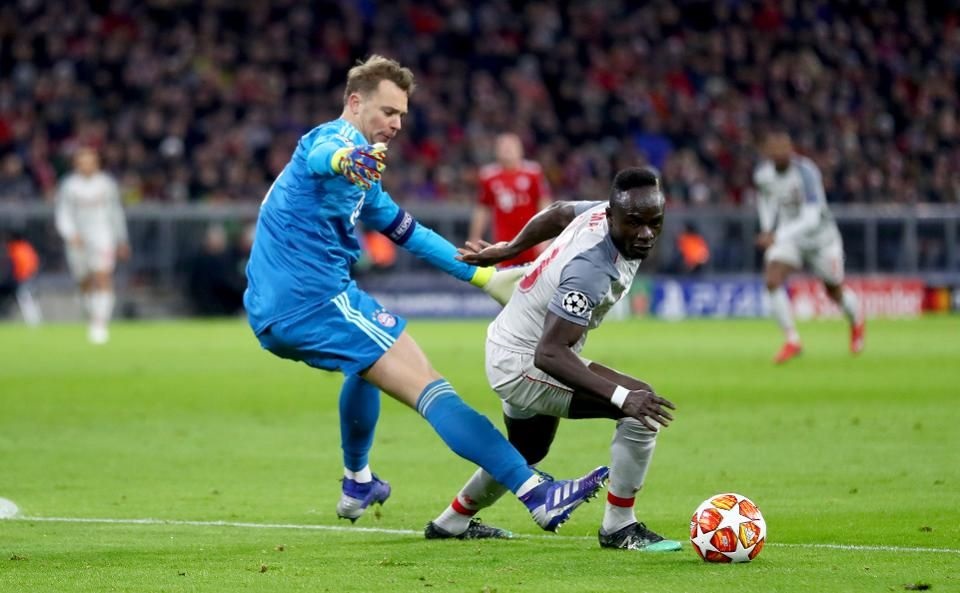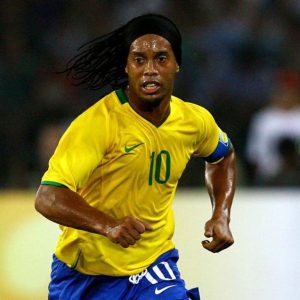

The modern Goalkeeper
Neuer, Motta and Cruyff: how the modern goalkeeper became more than just an afterthought!!
In his side’s 3-2 victory over Paderborn on Friday evening, Manuel Neuer dropped a clanger which captured perfectly the anxiety-inducing protagonism of the modern goalkeeper. Charging out of his area with the cavalier abandon that has become so synonymous with the World Cup-winning shot-stopper, Neuer found himself less than ten yards from the left-hand side touchline. He was nutmegged by Dennis Srbeny and five seconds later the ball hit the back of the net.
Neuer’s career is littered with these types of unforced errors. A quick YouTube search will uncover dozens of compilation videos exhibiting his proclivity to scurry away from his goalline so fast you’d think it was one of his Bayern teammates chasing him with a huge glass of Weissbier on the final day of the Bundesliga season. Some goalkeepers’ entire careers are defined by one or two such mistakes; one only need look at the replies to every single Loris Karius tweet to see that. And yet Manuel Neuer, who has glitched more often than most, is still lionised – why?
The reasons are more complicated than you might think. It isn’t exactly a trade secret that the modern goalkeeper’s zone of influence has expanded tenfold. Whereas a goalkeeper used to be a bung in a leak and how ‘good’ a player they were rested solely on how effectively the plugged the gap, nowadays the position is much more of a balancing act.
Part of the reason Neuer is often considered one of the greatest goalkeepers of all time – and certainly the most revolutionary – is down to how well he spins the plates that are the dual responsibilities of the modern goalkeeper.
When Pep Guardiola was at Bayern Munich, Neuer executed the ‘sweeper-keeper’ role so well, was so composed with the ball at his feet and had such passing prowess that Karl-Heinz Rummenigge had to stop the Catalan from playing him outfield. Around that time, Neuer finished third in the Ballon d’Or, just 0.4% of the vote behind Lionel Messi. Had he not been prevented, there’s every chance Neuer would have become the first player in the history of the sport to not only blur the lines between goalkeeper and outfielder but to break them down entirely.
He has always trod the line between the batshit and the brilliant – that more than anything else will be his legacy. In doing so, Neuer tested the limits of what a goalkeeper could be. Nowadays, nearly every emerging goalkeeper is formed in his polymathic image. The goalkeeper used to be something of an afterthought – they were the ones who got in the way of the goals and, by extension, the fun. Nowadays those between the sticks are stars in their own rights.
Nowhere is this trend more evident than in Thiago Motta’s much talked about 2-7-2 formation. The first thing which strikes you about it is the sum of the numbers: they add up to 11, not ten as has been the case since the Victorians introduced the concept of the formation with the 1-2-7 in the 1870s. Motta’s thinking is based on a reimagination of the formation as being read left-to-right rather than back-to-front. The two ‘2’s are the left-sided and right-sided wingers and full-backs and the ‘7’ is the spine of the team – which, significantly, includes the goalkeeper.
This centrality of the goalkeeper – in terms of formation and, indeed, psychologically – is the brainchild of the great Johan Cruyff who once said “in my teams, the goalkeeper is the first attacker, and the striker the first defender”, sentiments echoed by Motta as well as the great coaches of the modern era. In many ways, the modern goalkeeper is the logical conclusion of Total Football where any player can play in any position.
Football, which now more than ever is about overloads over every stretch of green, has finally realised that it’s a waste of a pair of feet for a goalkeeper to use only his hands.
When Manuel Neuer sauntered from the halfway line to take (and score) Bayern Munich’s third penalty in the 2012 Champions League Final, it was not an example of some high-level tactical intellectualism. It was one very confident man who was very good at striking the ball stepping up to wrestle the limelight from the outfielders. But that he did and was allowed to do so was deeply symbolic of the culture that he was a pioneer in creating. Goalkeepers are no longer just a preventative measure; they are a proactive force.
Whenever Hugo Lloris sweeps off his line to clear an overhit ball over the top or Ederson achieves a pass completion rate of over 85% they do so as evangelists for the Church of Manuel Neuer.
Find more about this subject in our online course Goalkeeper Training for Soccer Coaches
Follow us on Facebook!
Categories
Latest Courses
-
9 Lessons
-
1 Lesson
-
6 Lessons
You May Also Like
- Blog
- August 1, 2022
- Blog
- June 3, 2022
- Blog
- May 27, 2022
Developed by Brandit Digital Media Services.





